Sometimes you come across something unexpected in the strangest of places. Browsing around the Antigüedades AGP antiques shop in central Bogotá, Colombia on holiday in late December 2018, I found myself standing in front of three double-sided pages of sketches in a frame. I don’t know why my eyes lingered on them, but I was surprised to read the name Philip Webb on the label. THE Philip Webb, the English architect? Here in Bogotá? Why? How?
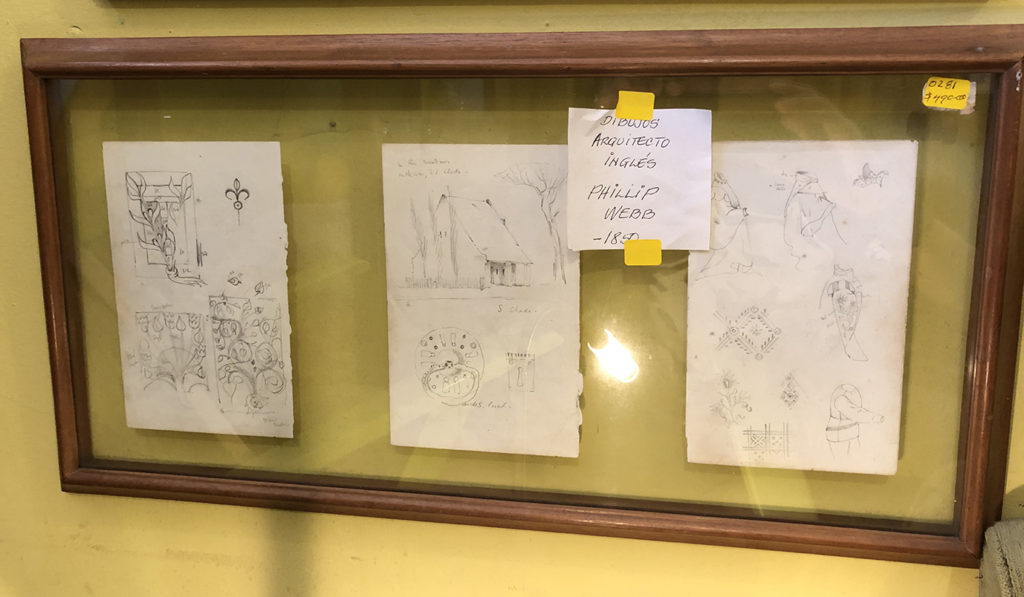
Philip Speakman Webb (1831-1915) is best known as the ‘father of Arts & Crafts architecture.’ A close friend and collaborator of William Morris, his most famous buildings are the Red House, designed in 1859 for Morris and his family, and Standen, now owned by the National Trust. An integral part of the Arts & Crafts movement of the late 19th century, he was a partner in the company that became Morris & Co., and also co-founded the Society for the Protection of Ancient Buildings in 1877. He founded his own practise in 1858 and retired in 1901, designing numerous other houses across the UK and one church in between.
He was also a prolific sketcher, and archives of his sketchbooks, architectural plans and drawings can be found in the V&A museum, the Royal Institute of British Architects, the British Library, The Fitzwilliam, and a handful of county councils. A quick check on Google Images (isn’t the internet wonderful?!) and the handwriting looked like Webb’s to me at first glance. As we were leaving the city early the next morning, I took a risk and negotiated a price. The frame sadly couldn’t travel with me as we had two weeks of travelling ahead, so it was broken up by the friendly shop owner and I to liberate the precious pages.
Examining the pages later, they didn’t appear to be the most exciting sketches, but searching auction and art archives revealed nothing like them had been sold (or even offered for sale) in the past few decades. Escapees, not just from their country of origin, but also from a sketchbook destined ultimately for a museum library or store room. The sketches show English vernacular architectural features in metal or stone, church windows with stained glass, briefly sketched costumes, a door handle, and a small house with a deep, sloping roof.
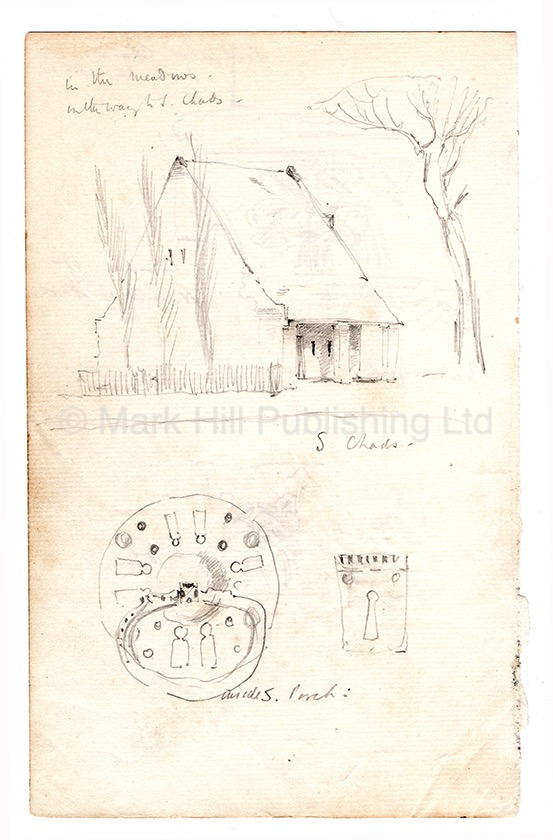
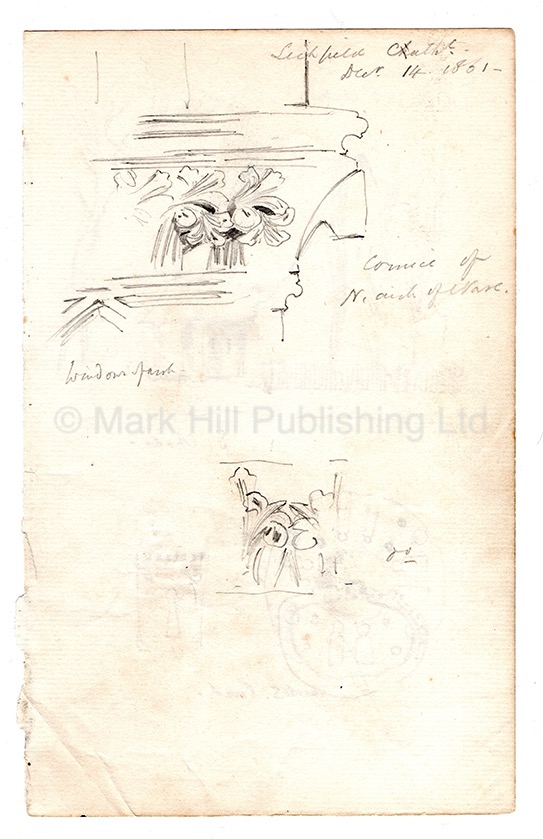
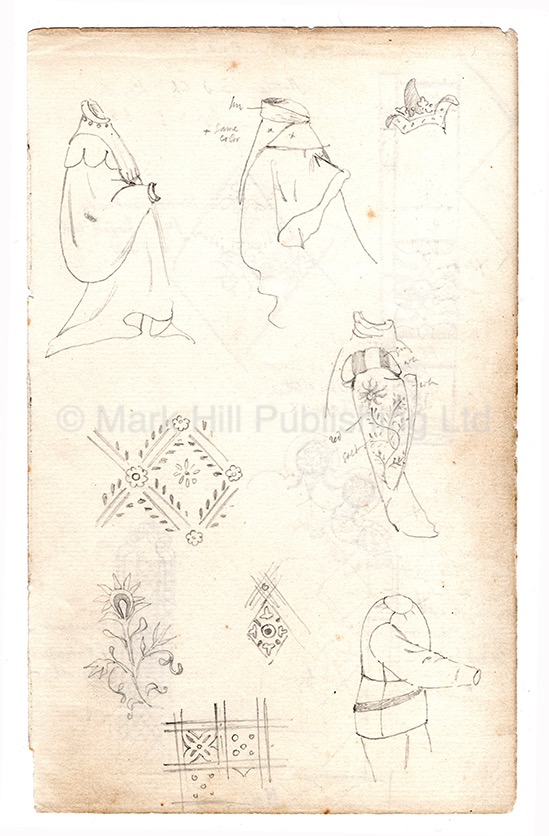
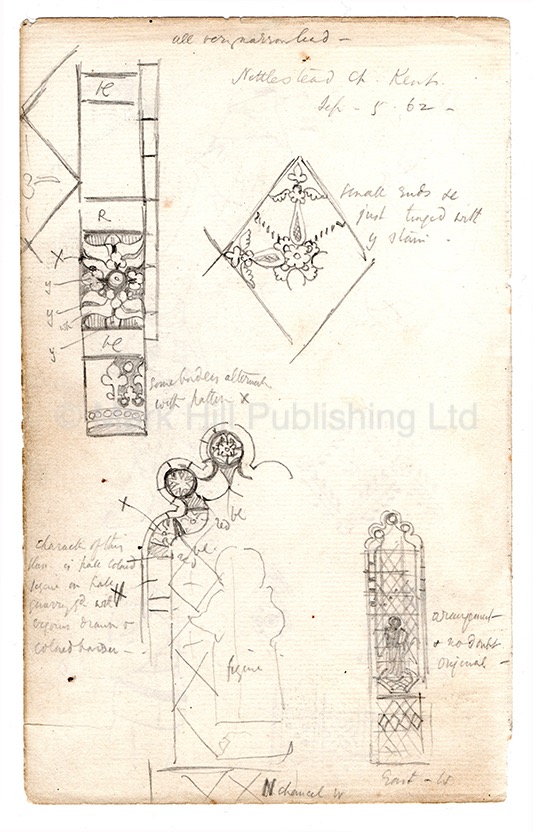
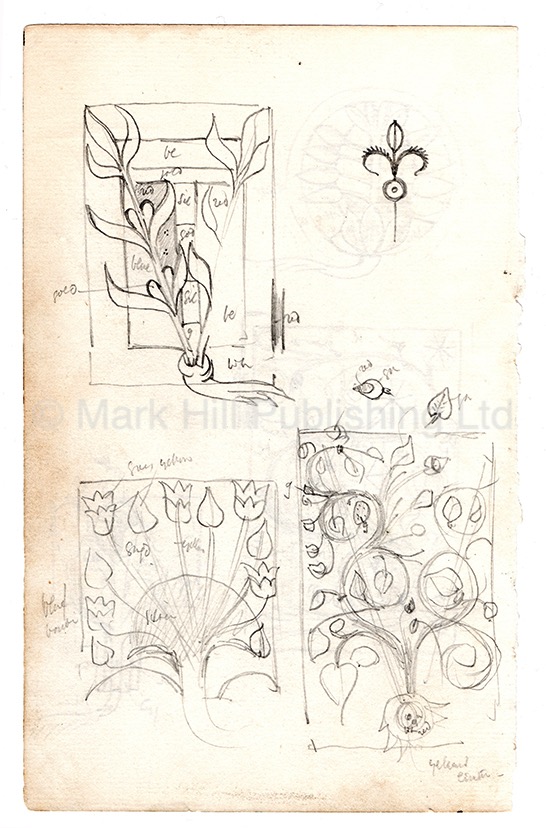
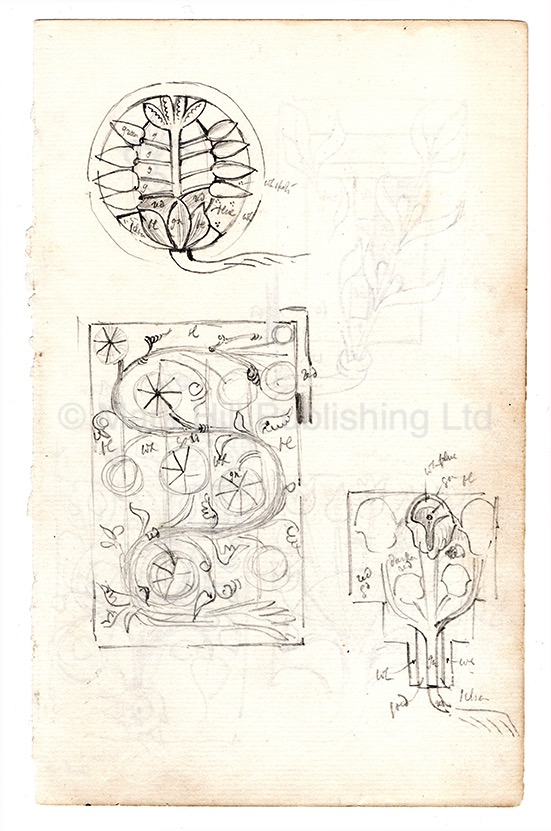
Two of the six pages bear dates and locations. A sketch of a floral cornice is captioned ‘Lichfield Cath’l Dec’r 14 1861‘, and ‘Cornice of N.aisle of Nave‘, and the church windows are captioned ‘Nettlestead Ch. Kent Sept – 5 – 62‘. The house is captioned ‘in the meadows Withway [?] L.S. [?] Chads‘, and ‘S Chads‘. Other notes are hard to read and appear to indicate colours, locations of the feature, or are aides memoires highlighting certain details. The gap between the dates implies that they were from different sketchbooks. Even though the page size is the same, most people tend to favour one type (or a few types) of sketch or note book until it becomes unavailable.
Lichfield Cathedral is obviously easy to identify, but ‘Nettlestead Church’ is presumably St Mary The Virgin, Nettlestead, between Maidstone and Royal Tunbridge Wells, which was built in the 13th century. I’ll need to visit with the drawings to be sure, as I should find the windows Webb sketched. As for ‘S Chads’, I have no idea where that is – or was. More research needs to be done, clearly.
So back to how and why they ended up literally on the other side of the world in Bogotá, Colombia. As to ‘how’, we’ll probably never know. They must also have been prized at some point, as the good quality oak frame appeared to date from a decade or so either side of 1900, and was glazed on both sides, enabling both sides of the pages to be viewed.
But ‘why’ began to be answered as my mind began to digest the experiences of the previous few days wandering around the city. My partner and I had both commented on the amount of English-style buildings in the city that stood out as unusual and weren’t found in any other South American city we had visited. These ranged from Victorian churches to light stone buildings that looked as if they had been lifted out of Oxford or Cambridge, to Arts & Crafts style houses, and even entire streets of what appeared to be suburban English houses from the 1910s-30s.
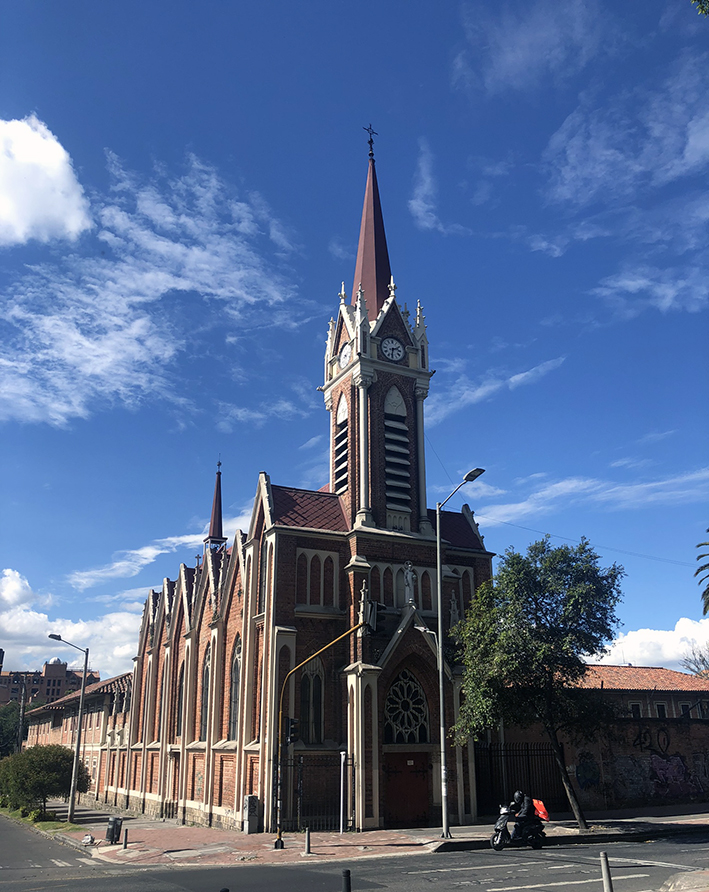
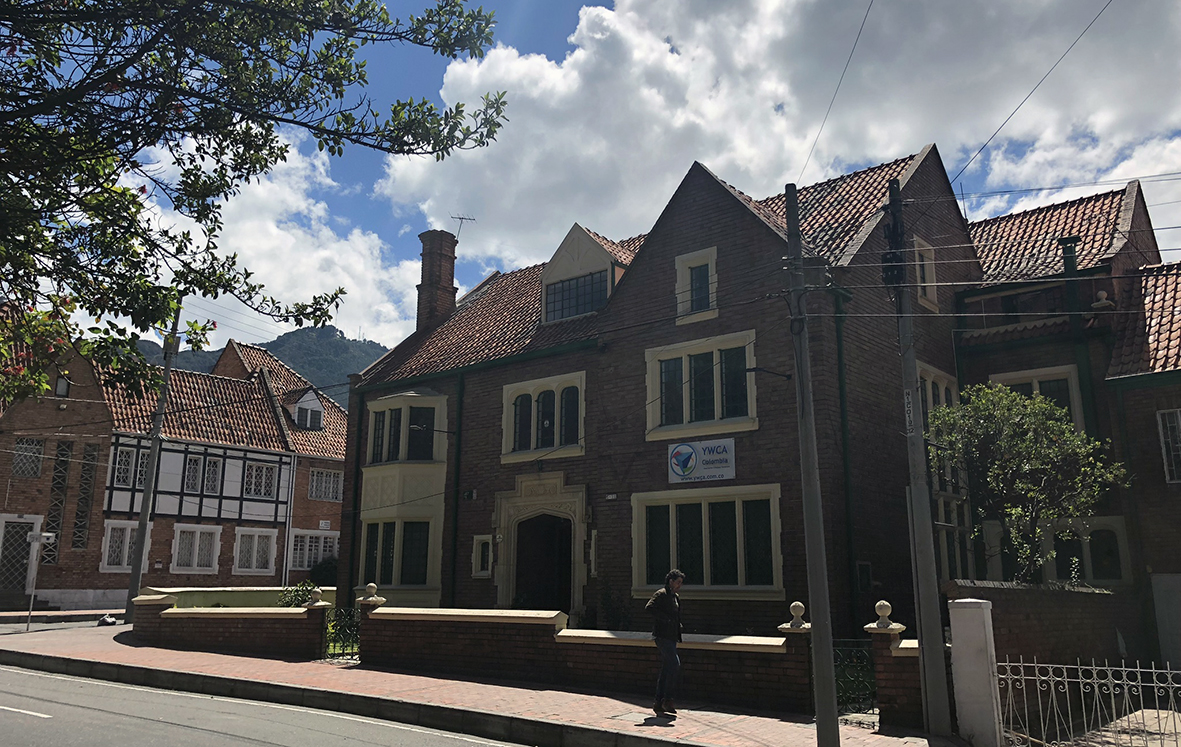
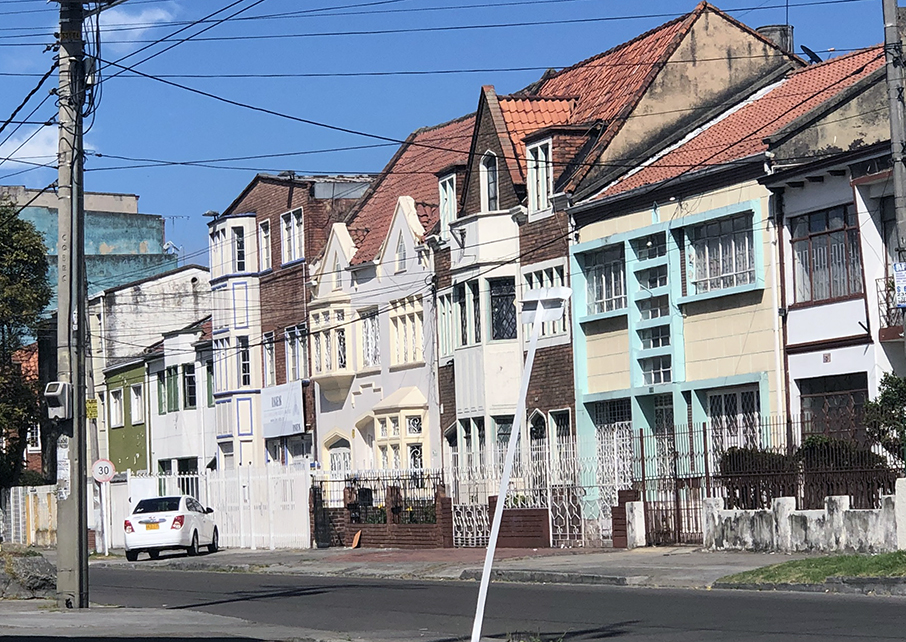
Googling everything I could revealed only a few pages of interest, but it soon became clear that these anomalies were in fact entirely intended.
The explanation stretches right back to the origins of the Republic of Columbia. In 1819, the country gained independence from Spain, but it wasn’t until 1886 that Colombia became an independent country of its own. Various sources explain that the British helped in many ways and that the new country was in need of a new identity to separate it from Spanish colonialism.
In terms of architecture, a number of new European style public buildings were designed in the mid-19th century by the French architect Gaston LeLarge and the British architect Thomas Reed. Many used brick, which had only previously really been used for industrial buildings in Colombia, adding further novelty. Around the turn of the century, ‘garden houses’ with front and back gardens became fashionable, and the British manner of handling these worked well and became popular.
On a more ‘human’ level, it was also felt that London and Bogotà shared the same sort of climate – grey, cloudy, rainy and cool. If the architecture worked in Britain, why not in Colombia? So, British architecture was introduced to Bogotà partly due to fashion and partly due to its meaningful novelty and ‘difference’.
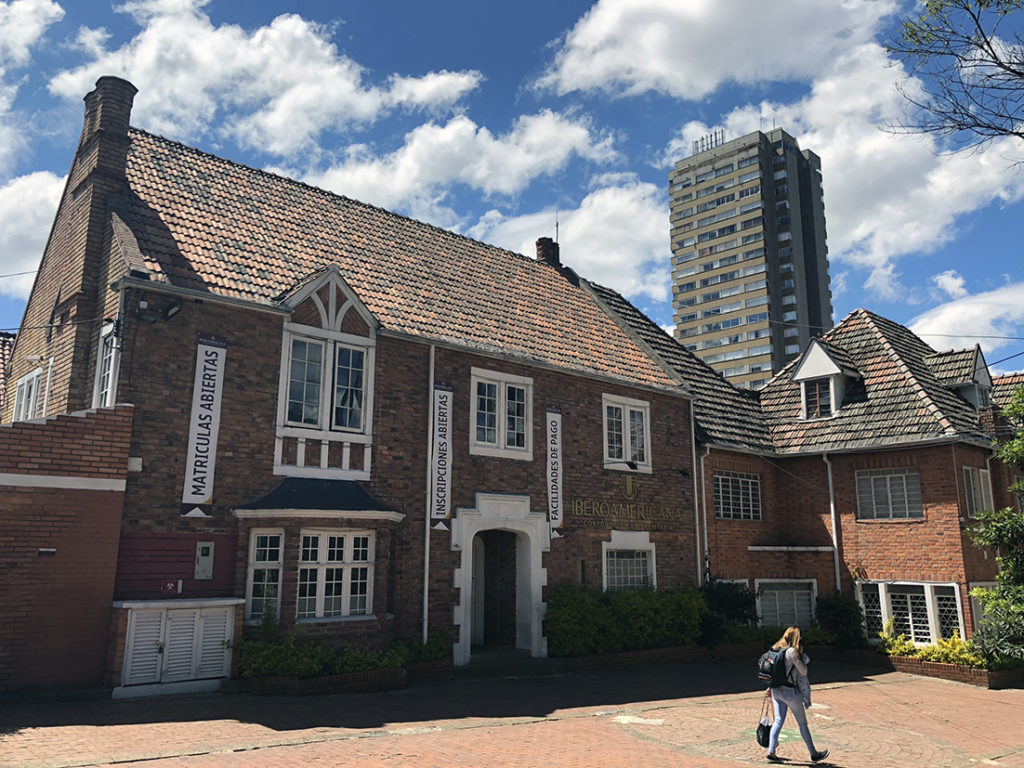
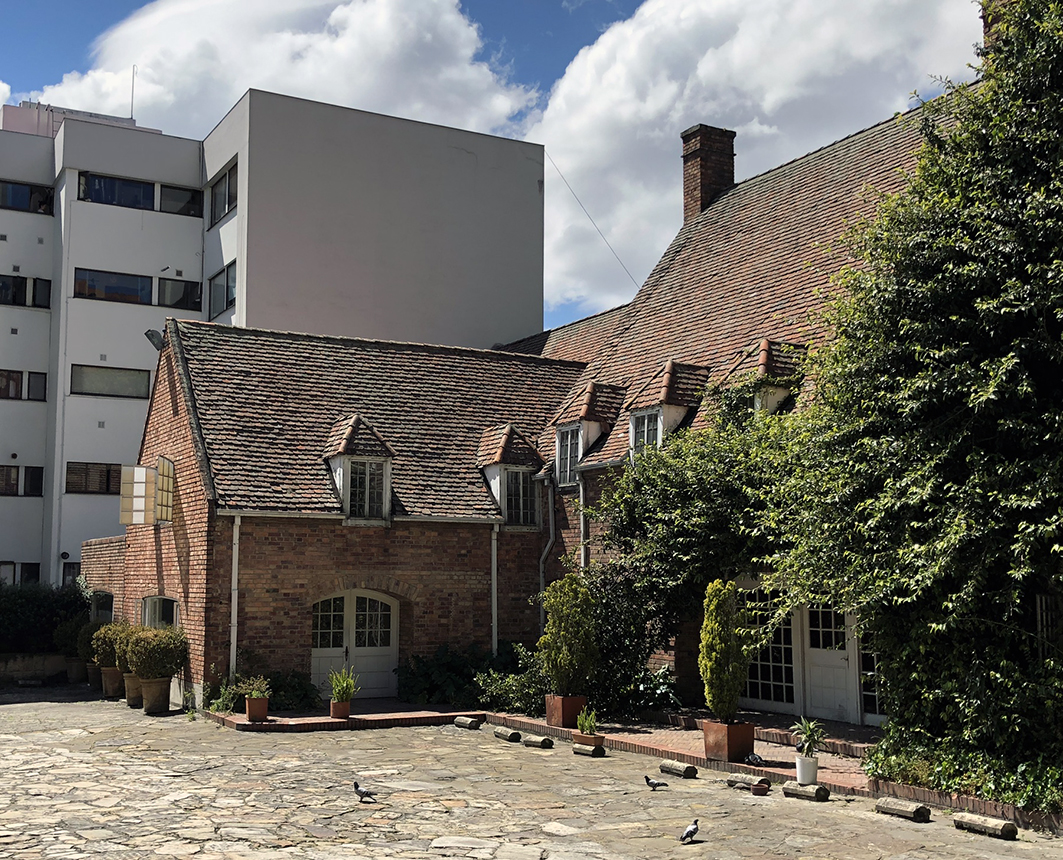

Much of the British style of architecture that was copied was what was in vogue in the UK at the time. Hence brick and stone Tudor-style or English vernacular buildings that are associated with the Arts & Crafts movement of the late 19th century until the 1910s predominate. The vogue in Bogotà for English style buildings continued into the 1950s, and the arrival of Modernist or mid-century modern style buildings, so even the ‘Metroland’ style, suburban terraced housing built across Britain from the 1910s-30s was built. It’s a strange feeling standing on ‘Acacia Avenue’ right in the middle of Bogotà!
If you want to see and feel it for yourself, there are a number of places to head to. First off is the La Merced neighborhood, which was built by the British Petroleum Company during the 1930s and ’40s for its executives. Most of the buildings are now offices, restaurants or part of a university. Also check out the Teusaquillo neighborhood, in particular the small university there, and southern Chapinero and its environs.

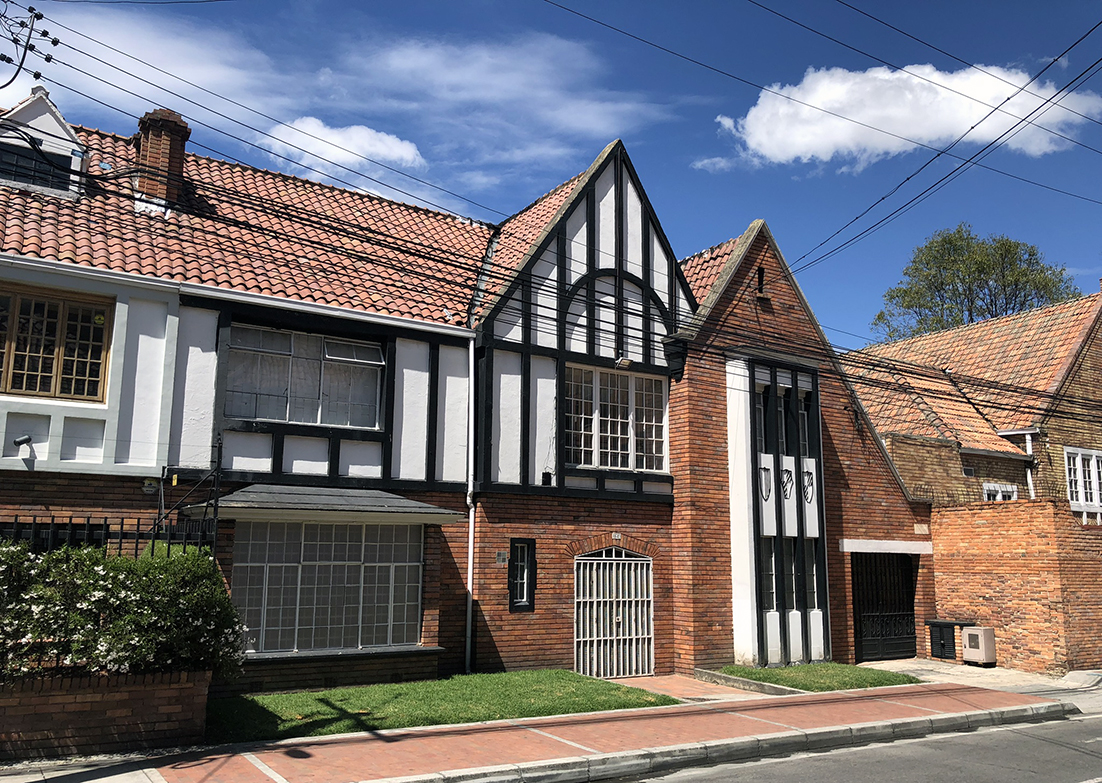
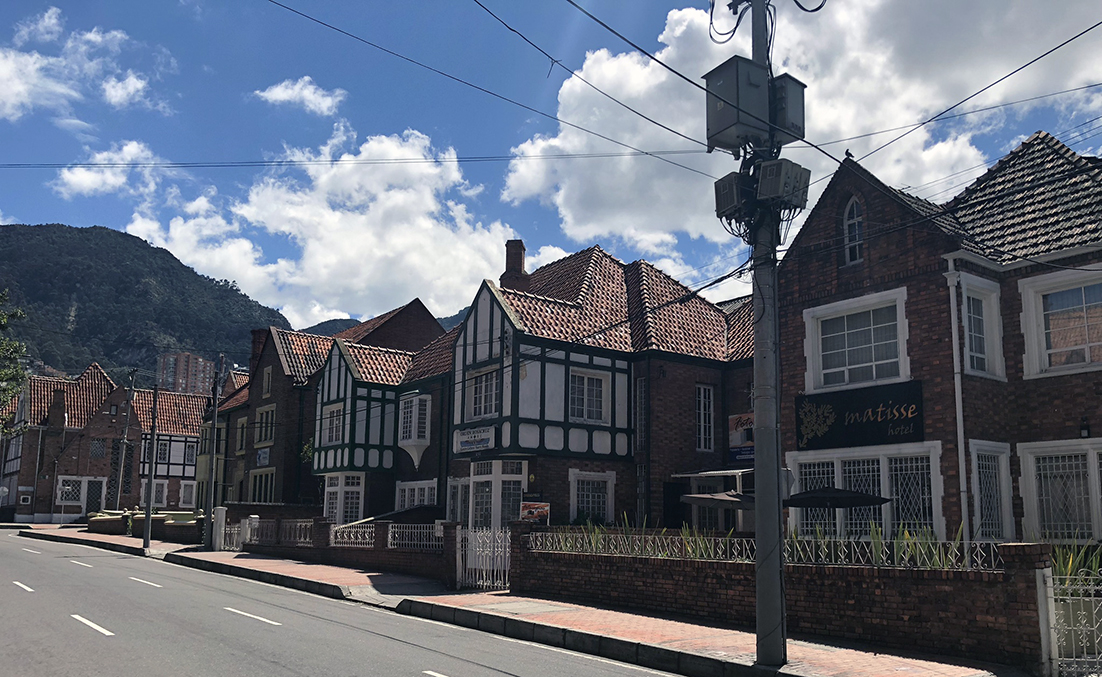
It’s most likely that my Webb sketches were brought out to Bogotà by an architect, either as part of a larger archive to be used as inspiration, or by an architect with a strong admiration for Webb and his passion for and popularisation of the English vernacular style. Over the intervening century, they became detached, and ended up hidden away in an antiques shop waiting for this Englishman to rediscover them and bring them home.
But what to do with them? For now, I’ll just enjoy them, and I’d love to find the time to visit the buildings Webb sketched. But half of me is dying to find out whether there’s a partial sketchbook in an archive somewhere with missing pages, waiting for mine to be slotted back in…

